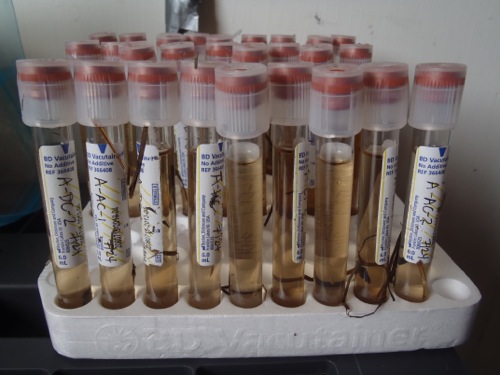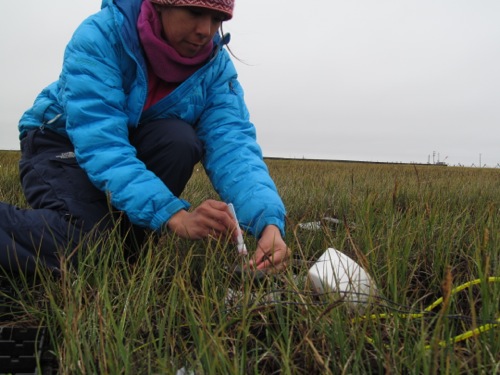
In this multi-faceted research project, another important component of this study is taking water samples from the boggy soil. We use special vacuum test tubes that slowly pull water out from the soil.
So yes, water actually defies gravity by rising up through the tube!! Okay, actually no laws of physics were harmed in the filming of this production. The tube is a vacuum (not the kind that you clean your carpet with). A vacuum is a space completely empty of matter. There is nothing in the tube; no air, no oxygen, nothing! So when the tube is connected to something else, in this case liquid, the tube doesn't like being empty and therefore pulls the liquid inside itself. The test tubes will be processed back in the lab using a gas chromatography machine where the researchers will determine the amount of carbon dioxide and methane trapped in the soil water.

What is Gas Chromatography?
So gas chromatography is a laboratory procedure used specifically in chemistry for separating and analyzing compounds. In this case, my researchers are separating carbon dioxide and methane from everything else in the water sample.


Comments